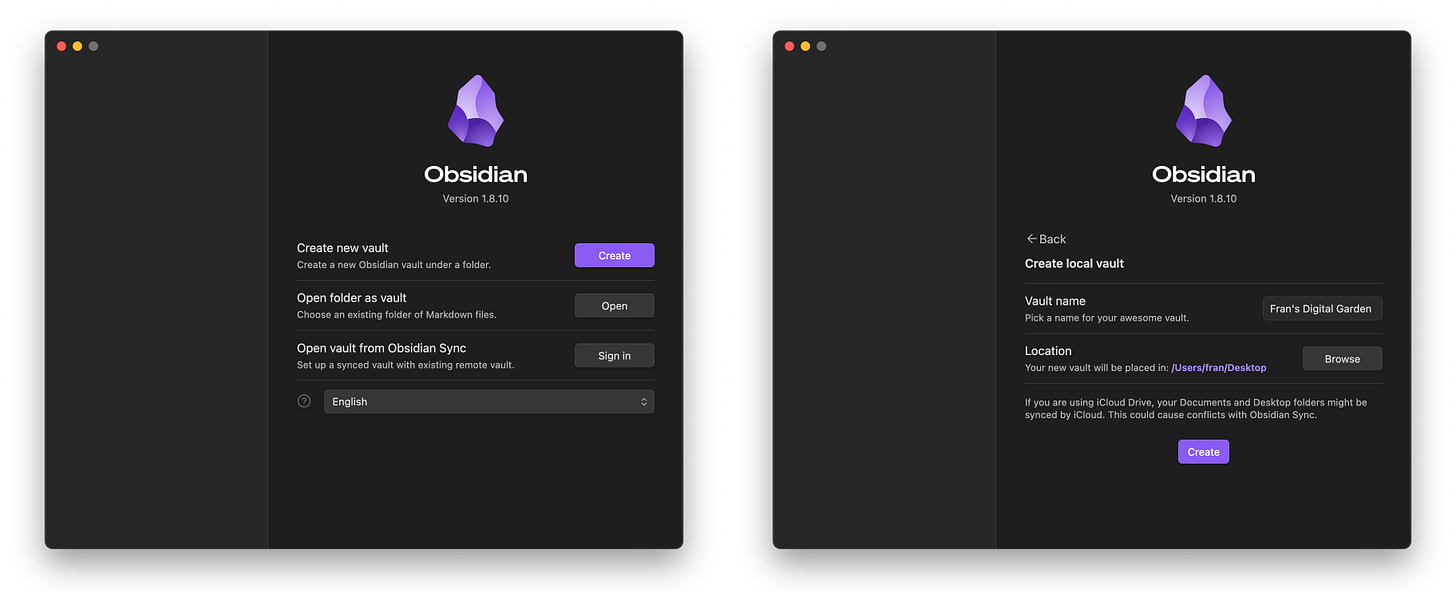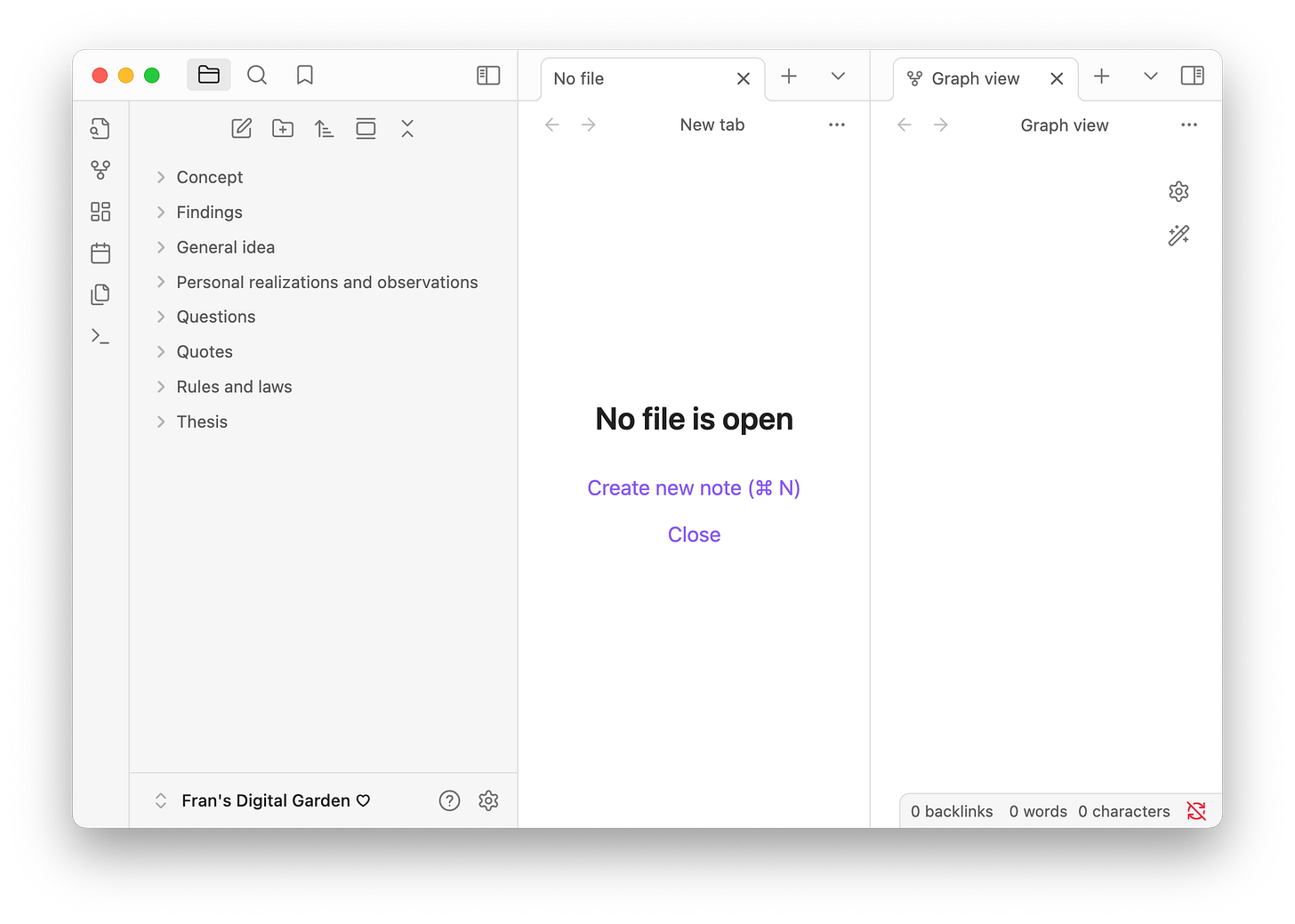how to make a digital garden: a beginner's guide
something so simple, it actually works. here's how i currently run my digital garden after 3 years of trial and error!
how can you become a conscious consumer of information in the digital age and under the attention economy?
i have been digitally gardening for the past 3+ years. if you’re new to digital gardening, what it is will likely vary based on who you ask — some call it a second brain, others a knowledge management system. i prefer terming it “digital garden” because it feels more exploratory and a little whimsy (exactly how i prefer to relate to my ideas)! but overall, it’s how i curate and synthesize information, and consciously tend to my curiosities!
i’ve tried many ways of doing it, whether it was configuring my own website or elaborate spreadsheets. sadly, these did not work out. trial, time, and error quickly made me realize that one of the most important things was that your digital garden has to work for and with you, not against you! it needs to be so simple, it’s sustainable — but also intentional enough that you actually get good value out of it.
after posting my first youtube video, i was so happy to see how others were interested in starting one of their own, so i figured: why not show you how i do mine?
a few quick disclaimers:
the tool i use should be similar across operating systems, but i’m fully in the apple ecosystem. if you’re on another OS, your setup might look a little different depending on what level you’re dealing with your digital garden.
there are many ways to “digital garden”, but not all of them suit my thinking and synthesizing style. my approach will probably work best for you if you’re just getting started, or want a softer, more exploratory approach to learning — rather than a rigid and immediately definitive one. (also, this will work for you if you want the cute graph XD)
✿ the tools + alternatives
obsidian is what i currently use. it’s been simple, reliable, accessible, and most importantly (kidding, but only half kidding) it lets you have the fun graph view with a low-barrier entry.
another alternative is Quartz 4 by Jacky Zhao. this, however, will be configured differently.
✿ setting up the garden: vault and initial folders
when you first open obsidian, you’ll create a vault. this is where your ideas — called “nodes” will be stored.
in this vault, we’ll try to keep nodes organized in two ways — organized within the sidebar, and interlinked well (within the nodes’ content + the graph view). for sidebar organization, i create 8 main folders:
folders + what they are
concept - title or name based ideas. examples include “digital minimalism” or “power distance”.
findings - scientific facts or insights from research papers and studies.
general idea - principle based ideas. e.g., “to disagree productively, identify whether we are disagreeing about what’s true, what’s meaningful, or what’s useful” — this idea was lifted from The Art of Productive Disagreement by Buster Benson, wasn’t written down word per word, but has really important principles.
personal realizations and observations - things i’ve learned primarily through my own lens. e.g., “A lot of my ideation happens in community settings that are enough to prompt ideas and thinking but not enough to spoon-feed it.”
questions - open ended questions ideas for prompting, challenging/contradicting my existing understanding, or further exploration. e.g., “Do Filipinos prefer stable and globally translatable technical professions? How might this potentially stifle risk-taking, entrepreneurial spirit, and local recognition and innovation? Why does this preference exist and what do we do about it?”
quotes - word per word sayings that resonate. e.g., “Being helpful and feeling helpful are different.” (from Karl Yang’s Commenting vs. making)
rules and laws - scientific or philosophical laws. e.g., “Beer’s Law - the absorption of light by a sample is directly proportional to the length of its path and its concentration."
thesis - final conclusions or thoughts i’ve arrived at after synthesizing information (= room for exploring) OR conclusions i’ve arrived at before synthesizing information (= room for questioning).
disclaimer: these are the categories that make sense to me as of writing. but they will always be under refinement — i’m going to continue observing to see whether any categories start to feel redundant or overlapping…
✿ adding, organizing, and interlinking nodes
now that we’ve made our vaults, set up our folders, and understand the different categories of information, let’s talk about adding and interlinking content!
there are three main steps i do when adding new ideas: (1) capture, (2) contextualize, (3) organize.
capturing is simply creating a new note to keep the idea. i try to treat ideas like water — capture them quickly or they’ll slip away!
contextualizing entails adding further information, citing sources, and interlinking nodes.
organizing makes it easier to retrieve information later on. primarily happens in the sidebar.
what does this look like in action?
adding + organizing ideas
when i get a new idea, i…
create a new note in my vault. for example, after reading the book The Art of Fairness by David Bodanis, i learned about the concept of “Power Distance” — which pertains to the relationship between superiors and juniors in a workplace.
contextualize by adding the main idea in the title of the note “Power Distance”, provide context + the source in the body, and add the hashtag #concept.
organize the new notes under their respective folder. since this note is a concept, i drag and drop this under the “concept” folder in the side bar.
let’s say i also come up with a personal realization, one where i realize that “i feel most fulfilled at work when things are fair, as seen in how my ideas are also considered”. i follow the same process as i did for the concept of power distance.
interlinking nodes
let’s say i then develop a related thesis, “Fairness can lead to more positive outcomes in a workplace.” i will…
create a new note titled “Fairness is important in a workplace”.
add further context within the node’s body, add the hashtag #thesis, discuss the thesis more elaborately. throughout this discussion, “mention” or “pull out” the various related concepts, quotes, or realizations you’ve collected by using the format “[[*title of the node you want to recall*]]“.
🌸 over time, watch your digital garden bloom 🌸
after digital gardening for 3+ years: what i wish i knew + wouldn’t do (when i was starting)
on youtube, i shared what i wish i knew and didn’t do when i was just getting started with digital gardening. you can view it here.
✿ parting note
when you make your digital garden, chances are you will be refining your process over time (as i will, since publishing this post). while this method may be a good starting point, be open to what you learn and how your process evolves. i honestly love to learn about it ♡
Fran ♡ Website | YouTube | Instagram
share this to support me for free + start building digital gardens with the besties ⋆˙⟡









the section on folders is amazing fran. i've really struggled with how to organize the "types" of notes / nodes (heh) i create but this makes the most intuitive sense to me. thank you also for sharing the link to quartz! it's time to get serious this year!!!!